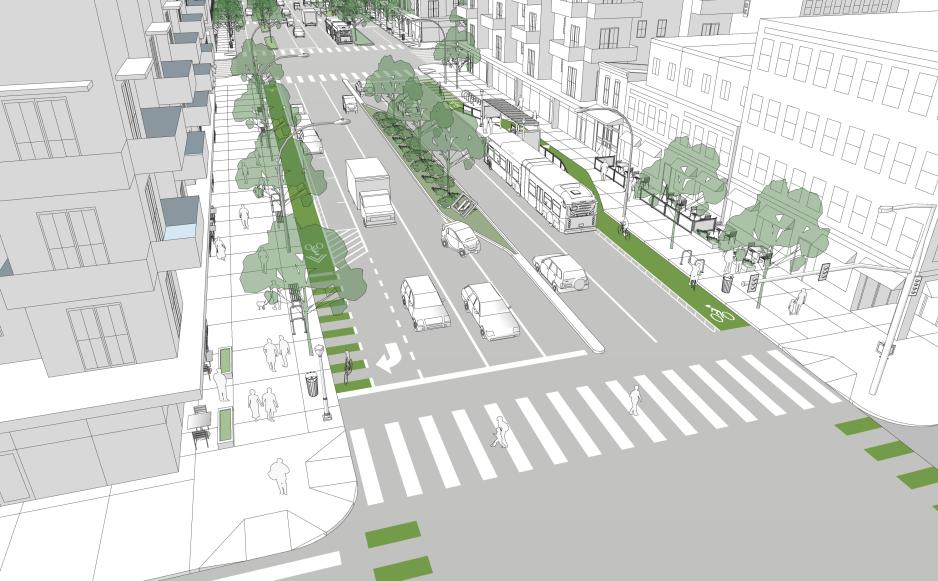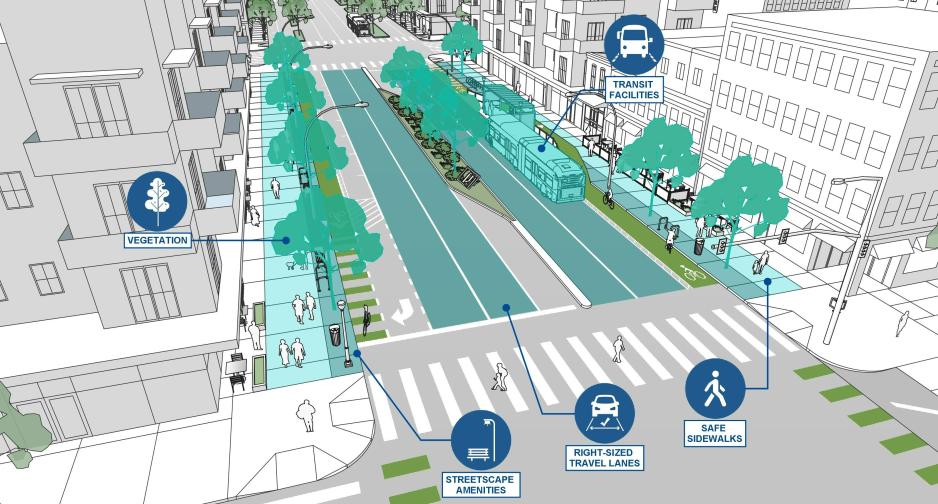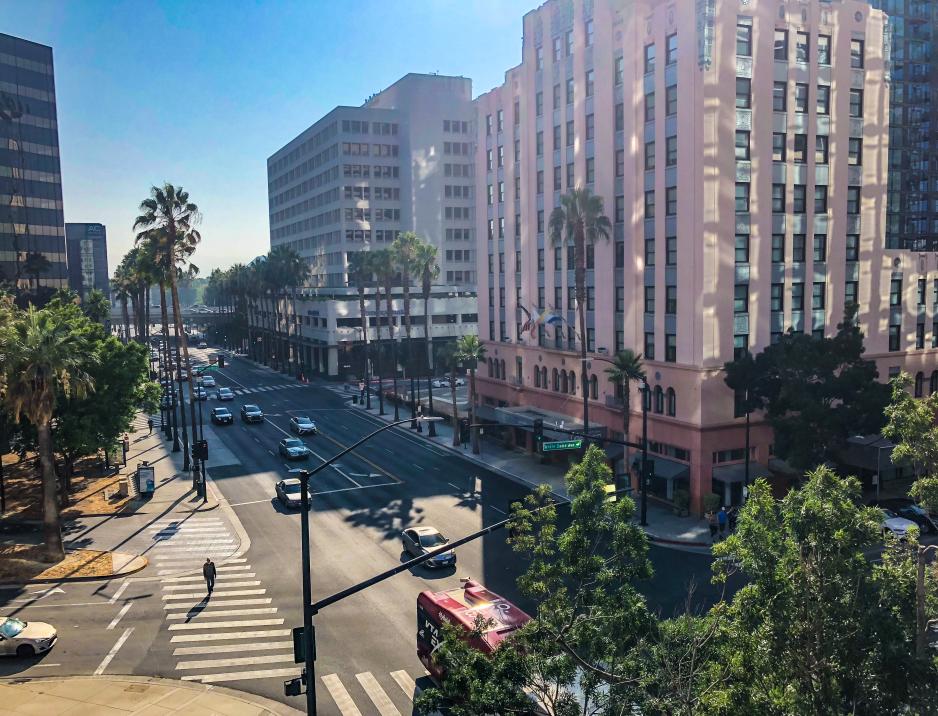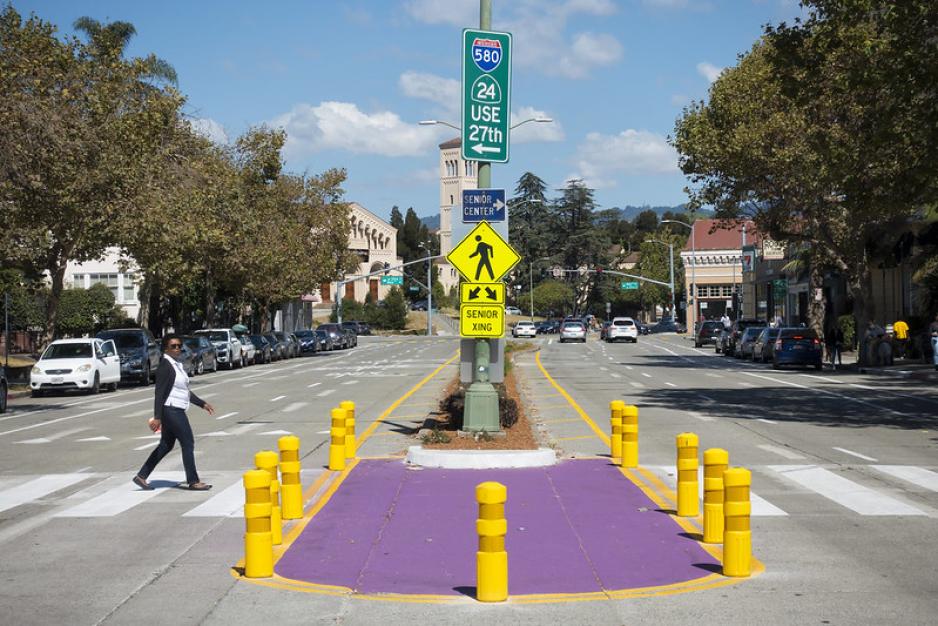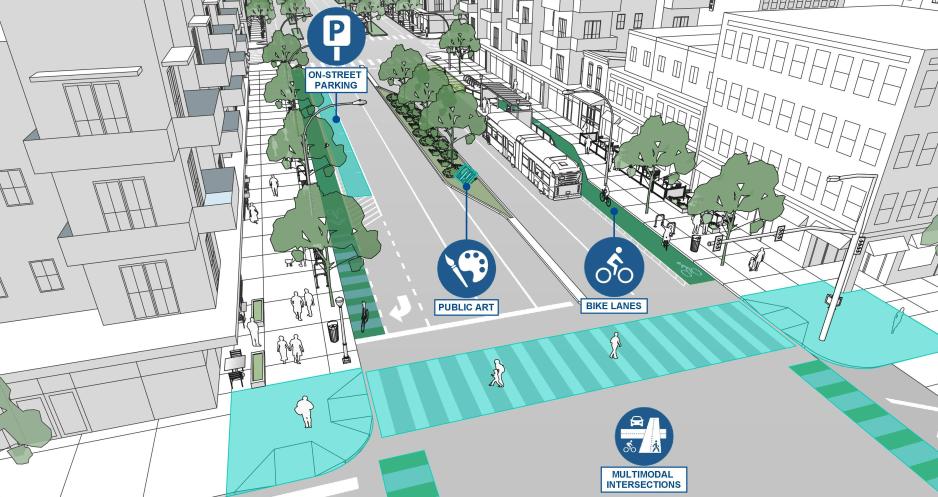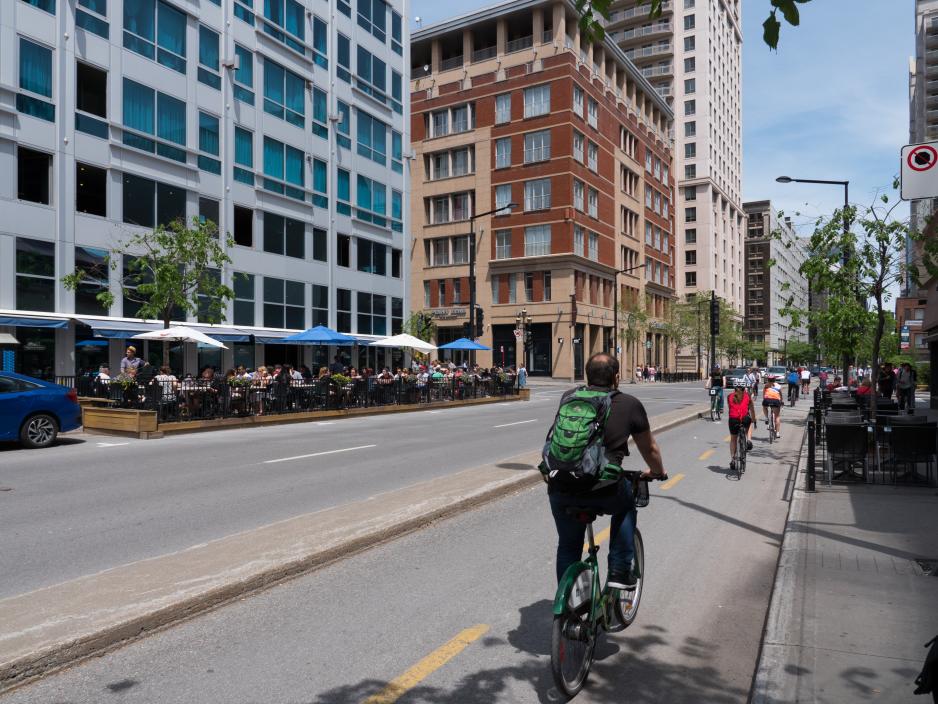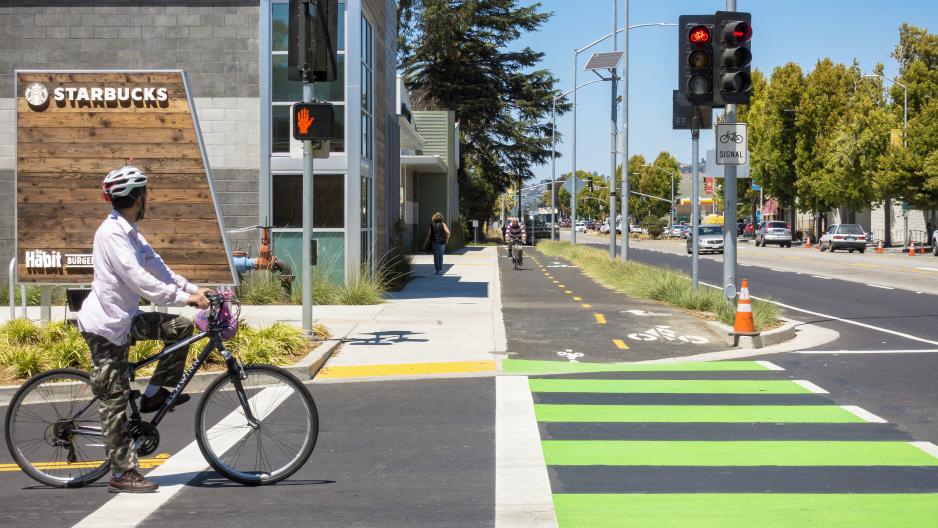Commercial streets serve corridors with large amounts of adjacent commercial land uses, but often include residential and office uses as well. To best serve these land uses, commercial streets should emphasize convenient vehicular traffic movement and access to adjacent land properties.
These corridors are also places of high community activity, therefore, commercial streets also need to accommodate safe, comfortable, convenient, and attractive travel for pedestrians, transit, and bicyclists. Design treatments should be utilized to improve the balance among the various travel modes.
Higher priority design elements and traffic management features on commercial streets need to balance convenient traffic movement with a high-quality pedestrian experience.
- Provide safe, accessible sidewalks.
- Provide high-amenity transit facilities.
- Provide vegetation for shade, and aesthetics. Street trees and planting strips are encouraged as a buffer to pedestrians.
- Provide streetscape amenities such as lighting, benches, trash receptacles and bike racks.
- Right size the number and width of travel lanes for traffic speeds, volumes and vehicle sizes. Provide narrower travel lanes where feasible.
- Accommodate large vehicles.
- Manage access.
- Provide medians with pedestrian refuges and planting.
- Prioritize transit operations
Lower-priority design elements and traffic management features on commercial streets support efficient and vehicular movement while still supporting a thriving pedestrian environment.
- Provide bikeways such as bike lanes.
- Provide on-street parking for convenient access to businesses and as a buffer to pedestrians.
- Provide urban design features such as public art and gateway features.
- Design streets and intersections supportive of multimodal transportation.
